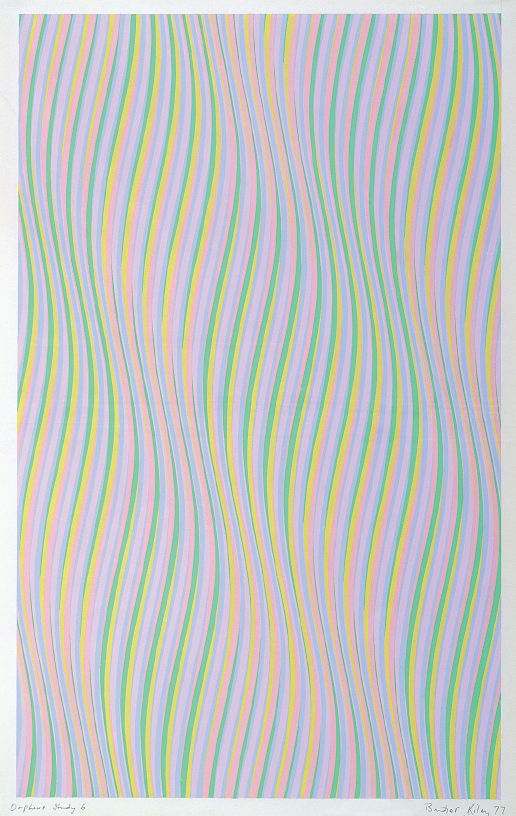Steve Reich, Music for 18 Musicians (1974–1976)
Music for 18 Musicians is one of the early classics of the minimalist style. The eighteen performers include four singers (they sing no words, but only syllables like “doo” and “ah”), a cellist, a violinist, two clarinetists (who sometimes switch to bass clarinets), and a large percussion group: four pianos, three marimbas, two xylophones, and a vibraphone (see page 17). This ensemble produces a timbre favored by the early minimalists — a percussive sound variously ringing and dry and brittle, reminiscent of the gamelans of Indonesia (see page 198). Reich was much influenced by their music; Music for 18 Musicians is directed not by a conductor but by the resonant vibraphone, and Reich likened this procedure to the role of the drummers who direct gamelans. Throughout Music, each time the vibraphone plays, it cues changes in the melodies and harmonies.
The piece is rigorously, almost schematically, organized. It falls into an introduction, twelve connected sections lasting about four minutes each, and a conclusion mirroring the introduction — all adding up to almost an hour of music. Our excerpt includes the introduction and first section.
Introduction Music for 18 Musicians begins with another feature beloved by minimalist composers: a regular, repeating pulse, objective and cool — a pulse that will continue for the whole work. Over this pulse, the introduction presents a set of rich harmonies on which the later sections of the work are based. But it does not present them in a conventional manner, as a harmonic progression that might accompany a melody. Instead the musicians linger over each harmony, repeating it over the even pulse for fifteen or twenty seconds or more before shifting to the next one. This is our first hint that musical time for the minimalists moves differently than for conventional composers. The most notable event in the midst of each harmony is contributed by the bass clarinets, which fade in and out twice with their own quick pulses.
Section 1 This four-

When the theme, which has a lively, syncopated feel, is completely assembled, the clarinets give it over entirely to the voices and play even pulses, fading in and out, as they did in the introduction. This is the midpoint of the section.
Soon the clarinets take up the main theme again, with the voices. Now the process of assembly we heard before is reversed; at each cue from the vibraphone the theme moves lower in pitch and grows more fragmentary, until little is left. Finally it drops out altogether. All that remains is the endless background pulse, before another cue from the vibraphone signals the beginning of the second section.
Noteworthy here — and a general feature of much minimalist music — is the composer’s ability to make us hear musical process in a new way, or at least with a new concentration. The incessant repetition of musical materials focuses our attention on the gradual changes they undergo; we hear this music as ordered gestures of slow building and unbuilding.